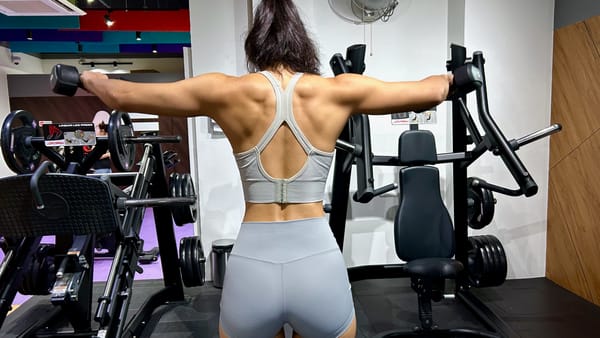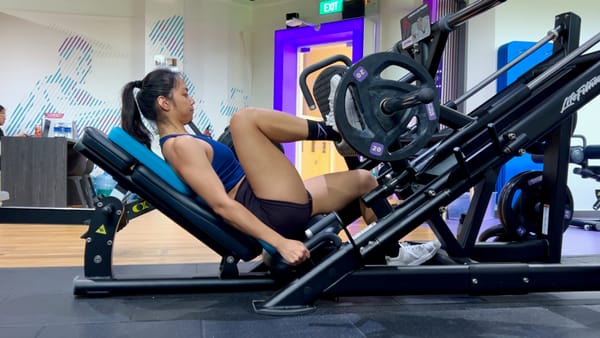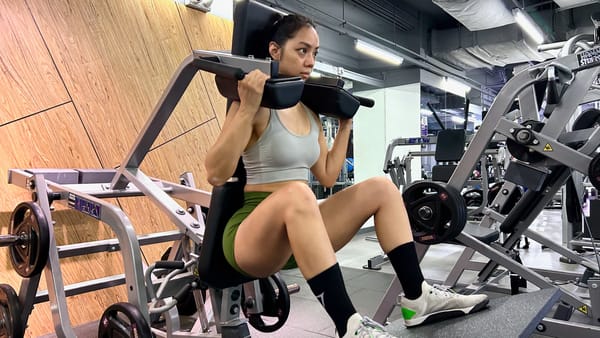7 B-Stance Exercises: A Complete Guide (How to Do + Tips)
Explore this introduction guide on B-stance exercises. Find out what B-stance is, their benefits, how to do them, practical tips, and FAQs.
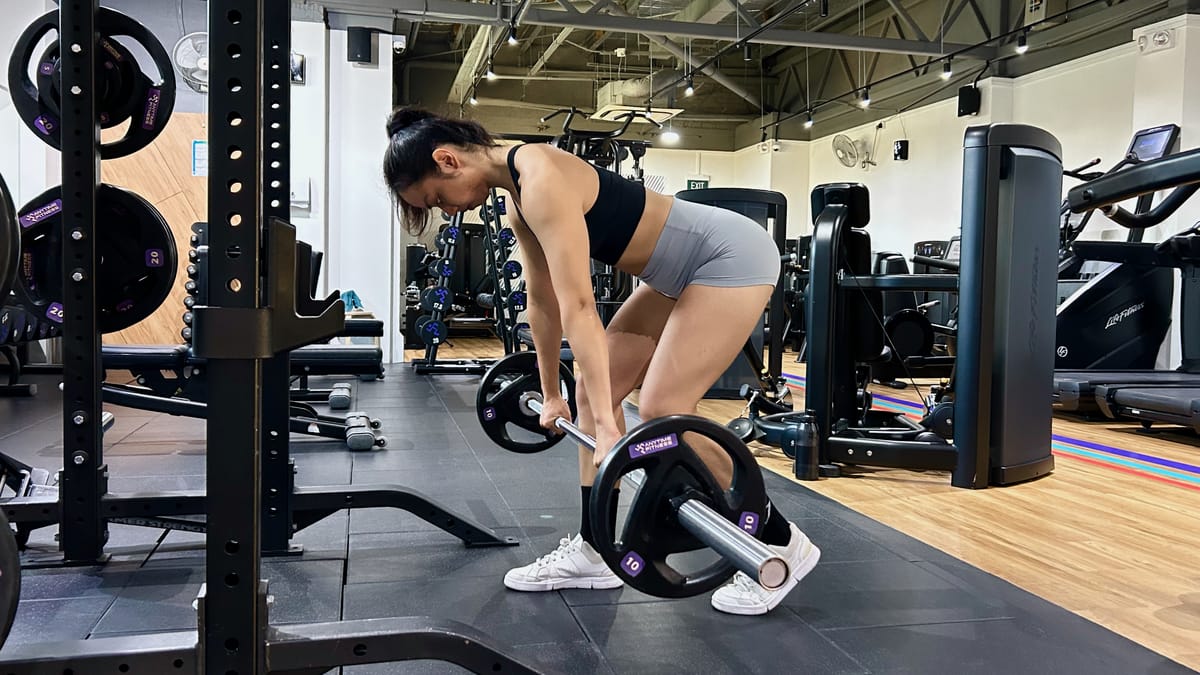
Heard about B-stance exercises but never knew what they could do for you?
You’re in the right place. And don’t worry, B-stance exercises aren’t weird, obscure, or controversial in any way.
They can be added to your workouts and used in the gym without fear of others thinking you’re doing “yet another novelty exercise”.
What are B-stance exercises?
B-stance exercises call for placing 1 foot slightly behind or in front of the other.
This shifts more weight onto 1 foot, forcing that leg to handle most of the weight while the other leg mainly provides support.
Since they’re adapted from regular versions of leg exercises, B-stance exercises would often feel familiar right from the start.
What is B-stance good for?
B-stance exercises let you focus on training unilaterally — 1 leg at a time.
This is helpful for correcting muscle imbalances that could affect your performance or increase your risk of injuries.
If you’re an advanced trainee trying to break through a plateau (to continue making progress), B-stance exercises can often be an invaluable tool.
Is B-stance better than single-leg?
While both B-stance and single-leg exercises have their place in training, B-stance exercises are more practical in some areas.
B-stance exercises are easier to learn
The techniques used on regular leg exercises are more transferable to B-stance exercises than single-leg variants.
B-stance options would feel much more familiar from the start and are easier to get a hang of. This means you won’t have to worry about a steep learning curve.
B-stance exercises are less demanding on balance
Single-leg exercises can be demanding on balance and technique, which limits the amount of weight you can use, especially when you’re new to the movement.
If you’re terrible with balance or simply don’t have the time to master a new movement, B-stance exercises are a safer bet.
B-stance exercises let you train with more load
The additional support you get during B-stance exercises makes a huge difference.
With single-leg variants, you can expect massive drops in the weight used (compared to regular versions).
B-stance exercises, in contrast, experience a much smaller drop in weight. This lets you continue training with a significant load.
In practice, you’re also more likely to train close to failure with a B-stance.
Overview of B-stance exercises
| Exercise | Main target muscles | Can be done with |
|---|---|---|
| B-stance squat | Quads, glutes | BB, DB, safety squat bar, smith machine, belt squat machine |
| B-stance leg press | Quads, glutes | 45-degree leg press machine, seated leg press machine |
| B-stance hack squat | Quads, glutes | Hack squat machine |
| B-stance hip thrust | Glutes, hamstrings | BB, DB, smith machine, landmine, hip thrust machine |
| B-stance RDL | Hamstrings, glutes, lower back | BB, DB, trap bar, smith machine, landmine, shrug/deadlift machine |
| B-stance good morning | Hamstrings, glutes, lower back | BB, safety squat bar, smith machine |
| B-stance back extension | Hamstrings, glutes, lower back | BB, DB, weight plate, landmine |
#1: B-stance squat
Main target muscles:
- Quads
- Glutes
Can be done with:
- Barbell
- Dumbbell
- Safety squat bar
- Smith machine
- Belt squat machine
How to do the B-stance squat:
Benefits of the B-stance squat:
- Technically similar to a regular squat
- Able to use more load than with split squat
- More stable and less demanding on balance than other unilateral squats (Bulgarian split squat, pistol squat)
For the B-stance squat, make sure to keep the majority of your weight on the front foot. The back foot should only be in a support role.
In practice, you could think about it as 80% on the front foot, 20% on the back foot.
For the back foot, make sure the weight rests only on the ball of your foot. Bringing your heel to the ground would only shift more weight onto your supporting foot.
Also, avoid bringing your supporting foot too far back. Having too wide of a stance brings it closer to a split squat and affects how closely you can replicate the setup of a regular squat.
#2: B-stance leg press
Main target muscles:
- Quads
- Glutes
Can be done with:
- 45-degree leg press machine
- Seated leg press machine
How to do the B-stance leg press:
@dailyjlh literally why have i never thought of this before?! 🔥🌶️🥵 wearing new @AYBL & drinking @GHOST® cxde NEENY #gym #gymhack #legpress #gymtips #bstancelegpress #gymtok #gymgirl #fitness #gymhumor #legday #quadday ♬ HOTEL LOBBY KID99 - Kid99
Benefits of the B-stance leg press:
- Able to use more load than single-leg leg press
- Feet position can be adjusted to emphasize certain muscle groups
- Takes advantage of stability provided by the machine to focus on the working leg
Keep your weight on the front foot for the B-stance leg press.
Compared to the B-stance squat, you have a little more wiggle room on the B-stance leg press.
Thanks to the support provided by the machine, you’re able to better focus on your working leg without worrying about balance.
It’ll also be easier for you to maintain most of your weight on the front foot.
#3: B-stance hack squat
Main target muscles:
- Quads
- Glutes
Can be done with:
- Hack squat machine
How to do the B-stance hack squat:
Benefits of the B-stance hack squat:
- Only practical way to train unilaterally on the hack squat
- Feet position can be adjusted to emphasize certain muscle groups
- Takes advantage of stability provided by the machine to focus on the working leg
Similar to the other squat options, keep the weight on your front foot for the B-stance hack squat.
Since it’s a machine-based exercise, you’re going to benefit from having more support. This gives you the capacity to push harder on each leg.
Plus, you’ll be more comfortable with going close to failure on heavier sets.
In case you’re wondering, there’s another way to train unilaterally on the hack squat:
@laurensimpsonofficial#fyp #gymtok #hacksquat #singleleghacksquat #fitness #legworkout ♬
While it looks like a really smart setup, we wouldn’t recommend it if you have other options.
If your objective is to do a machine-based single-leg movement, the leg press is a more practical (and safer) option.
#4: B-stance hip thrust
Main target muscles:
- Glutes
- Hamstrings
Can be done with:
- Barbell
- Dumbbell
- Smith machine
- Hip thrust machine
How to do the B-stance hip thrust:
@laurensimpsonofficial B-stance VS Single leg hip thrust 🍑🤓 #fyp #hipthrust #gymtok #Fitness #bikinipro #hipthrusttutorial #gymtips #gymmotivation ♬ ice on my baby - ✿
Benefits of the B-stance hip thrust:
- Technically similar to regular hip thrust
- Able to use more load than with single-leg hip thrust
- More stable and less demanding on balance than single-leg hip thrust
This B-stance hip thrust is a little different from the others. Instead of having the working foot in front, it’s now the opposite: the working foot is behind the supporting foot.
For the supporting foot, you’re keeping the weight on your heel (rather than the ball of your foot).
The same idea applies there: think about it as 80% on the front foot, 20% on the back foot.
Don’t worry, though. This is one of the most intuitive B-stance exercises, and it won’t take long to get the hang of it.
For a guide on hip thrust setup and technique, check this out.
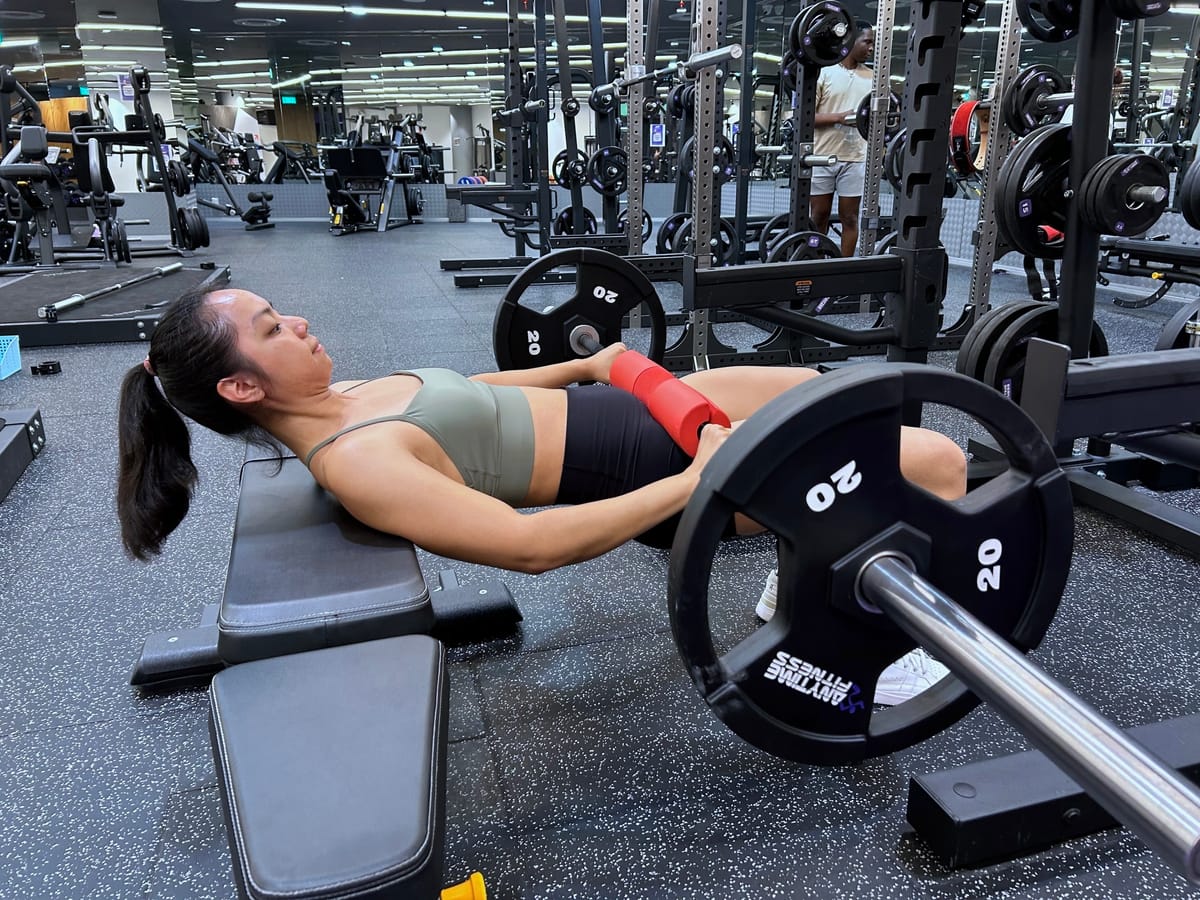
#5: B-stance RDL (Romanian deadlift)
Main target muscles:
- Hamstrings
- Glutes
- Lower back
Can be done with:
- Barbell
- Dumbbell
- Trap bar
- Smith machine
- Landmine
- Shrug/deadlift machine
How to do the B-stance RDL:
@arielyu.fit B-Stance RDL Tips: Supporting foot (behind) should be positioned slightly behind the working leg (front leg) Supporting foot should lightly touch the ground to help maintain balance only Keep the working leg's shin vertical to the floor Focus on controlled movements throughout the exercise, avoiding any jerking or sudden motions #glutesworkout #gymtips #gymrat #gymgirl #legday #rdl #fyp #hamstrings #gymmotivation ♬ original sound - Ariel Yu
Benefits of the B-stance RDL:
- Similar in technique to the regular RDL
- Able to use more load than with single-leg RDL
- More stable and less demanding on balance than single-leg RDL
The B-stance RDL is another popular exercise on this list.
Given how well-loved glute exercises are, it’s no wonder everyone has RDLs on their training menus.
This exercise is a great tool if your progress on the RDL is slowing or if you’ve been stuck for a while.
For the B-stance RDL, keep your weight on the front foot. Your supporting leg goes behind, resting on the ball of your foot.
Make sure the knee of your supporting leg doesn’t get in the way of the bar during the exercise.
😉 Want to look even better from behind? We got you.
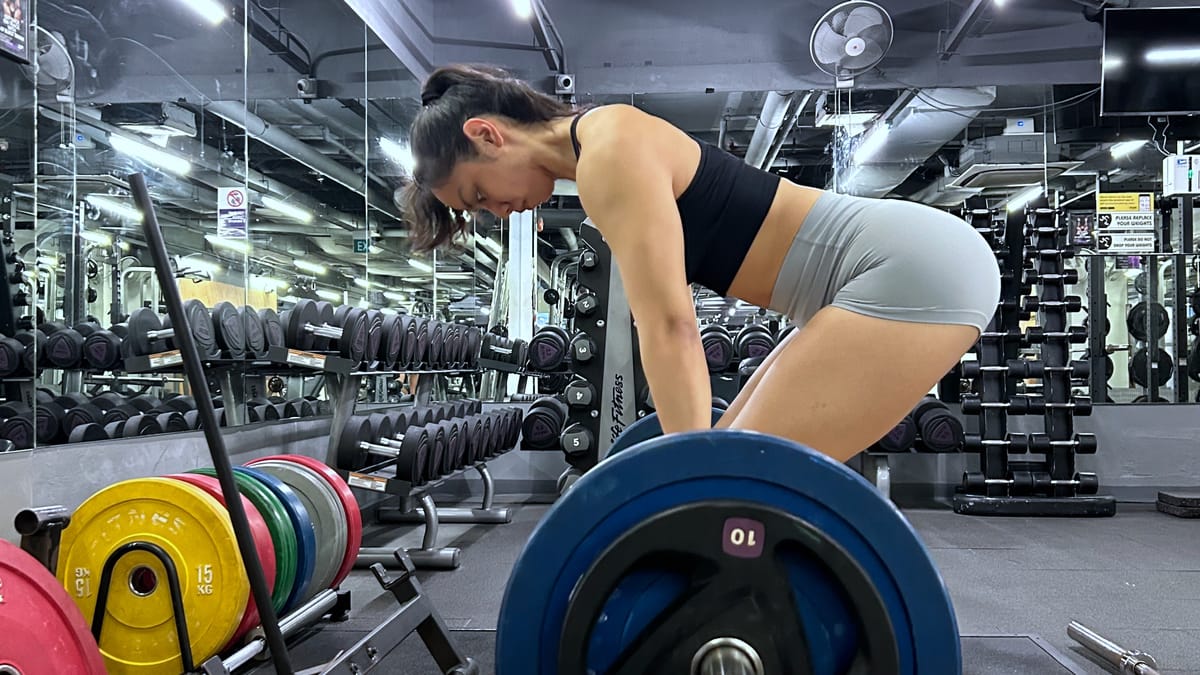
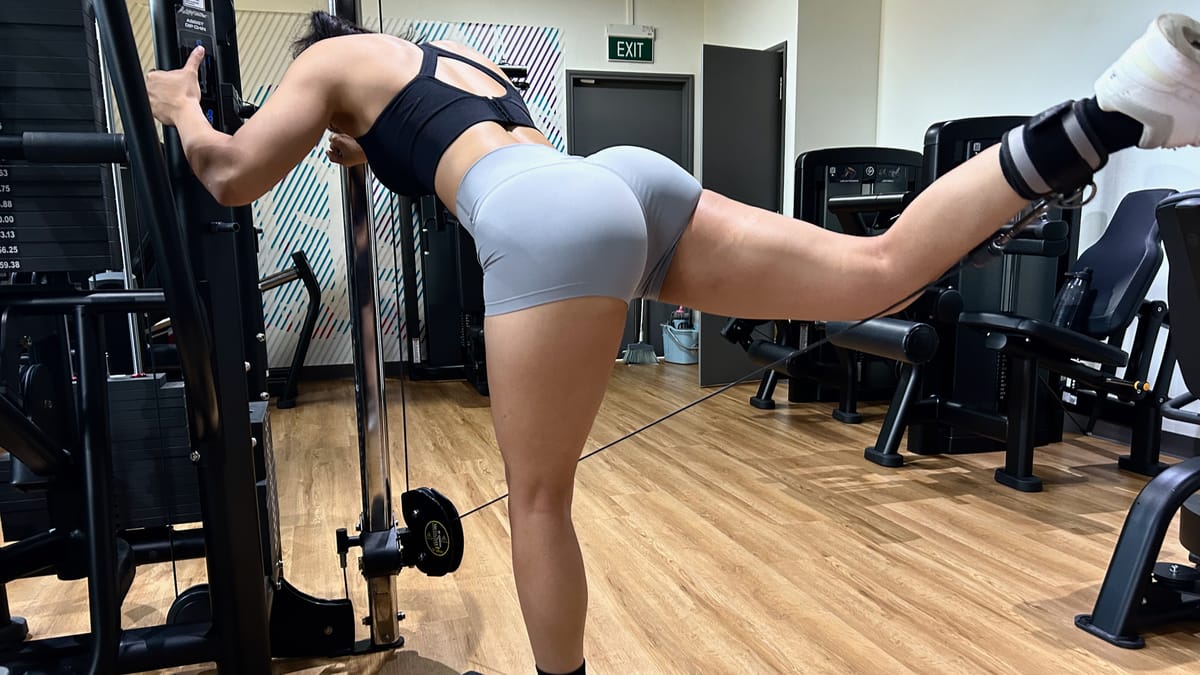
#6: B-stance good morning
Main target muscles:
- Hamstrings
- Glutes
- Lower back
Can be done with:
- Barbell
- Safety squat bar
- Smith machine
How to do the B-stance good morning:
@laurensimpsonofficial Have you tried b-stance good mornings? 😮💨#fyp #goodmornings #bstance #gymtok #fitness #legday #glutesworkout #glutegains ♬ original sound - sp33dsongsx
Benefits of the B-stance good morning:
- Technically similar to regular good morning
- Able to use more load than with single-leg good morning
- More stable and less demanding on balance than single-leg good morning
Hilarious name? Yes. Great exercise? Absolutely.
The good morning is very similar to the RDL with just 1 key difference: the weight is loaded on your back.
With the weight further away from your center of mass, you’ll have to go much lighter on the good morning.
With the B-stance good morning, keep your working leg in front. Your back leg should be on the ball of the foot, acting simply as a support.
If you’re nervous about doing the B-stance good morning with free weights, try it out on the Smith machine first.
Smith machine B-stance good morning:
The Smith machine locks the bar path in place so you can get comfortable with the movement.
You can do so much more with the Smith machine — it's super underrated.
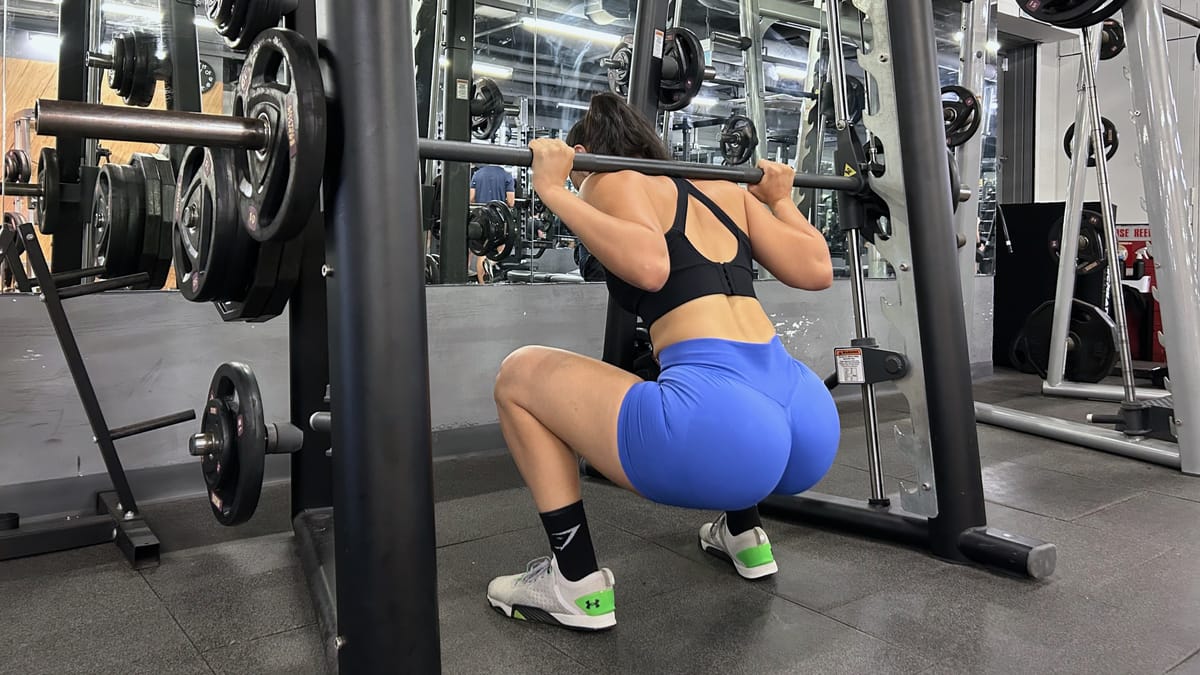
#7: B-stance back extension
Main target muscles:
- Hamstrings
- Glutes
- Lower back
Can be done with:
- Barbell
- Dumbbell
- Weight plate
- Landmine
How to do the B-stance back extension:
Benefits of the B-stance back extension:
- Able to use more load than with single-leg back extension
- More stable and less demanding on balance than the single-leg back extension
- More comfortable unilateral option for those who have knee discomfort
Looking for a more stable alternative to the B-stance RDL? Try the B-stance back extension!
While both exercises share a similar movement pattern, the back extension offers more support (on your upper thigh).
For the B-stance back extension, keep your working leg anchored to the machine (below the pad) and position your supporting foot on top of the pad.
Rest your ankle on the pad as lightly and avoid “hooking” the pad with your foot during the exercise.
How do you add B-stance exercises into your workouts?
B-stance exercises are helpful for correcting muscle imbalances, and anyone can benefit from them.
There are 2 main ways you can train with them.
Use them to complement your regular exercises
Not making good progress like before? Or hoping to push through a plateau? Or having problems with a weaker side?
Try adding B-stance variations of a leg exercise you’re trying to work on.
This complements your current program by adding variety and (hopefully) addressing issues that are slowing your progress.
For a start, add just 2 to 3 sets of a B-stance exercise to your weekly program. Continue making progress on the exercise and monitor your results. From there, adjust based on how your body responds.
Example: add 3 sets of B-stance RDL weekly to work on your regular RDL
Use them to substitute single-leg exercises
Alternatively, you could also use B-stance exercises as replacements for single-leg exercises you’re doing.
The goal is the same here: to train unilaterally in order to address any imbalances.
In comparison, B-stance exercises tend to be more forgiving and allow you to work with weights more similar to what you’d use with regular exercises.
Example: replace single-leg RDL with B-stance RDL
FAQs about B-stance exercises
Are B-stance exercises suitable for beginners?
As long as you’re familiar with the regular version of an exercise, mastering the B-stance variation is relatively straightforward.
The technique and fundamentals are very similar — if not identical.
For beginners, it’s a good idea to build up your proficiency in the regular exercises first. Focus on making consistent progress on them.
You can then explore B-stance exercises when you’ve reached a point where your progress is slowing or where a weaker side is starting to show.
When should you choose single-leg exercises over B-stance?
Choose single-leg exercises if your sport requires them (e.g., pistol squat). And don’t forget that single-leg exercises are great for working on your balance and coordination.
Training from home and don’t have access to a lot of weights? That’s where single-leg exercises are wonderful options too.
TBH though, if you simply prefer single-leg exercises, stick with them!
What you want to choose are exercises you enjoy and will happily do every workout.
Can you replace regular leg exercises with B-stance exercises?
Of course you can, but why?
Regular exercises let you work with weights you simply cannot achieve with the B-stance. Plus, they’re more time efficient (literally takes half the time).
The key here is not to swap out one for the other entirely. Instead, think of both types of exercise as complementary.
The smart thing to do? Evaluate your training needs and see how you can include B-stance exercises in a meaningful way.




